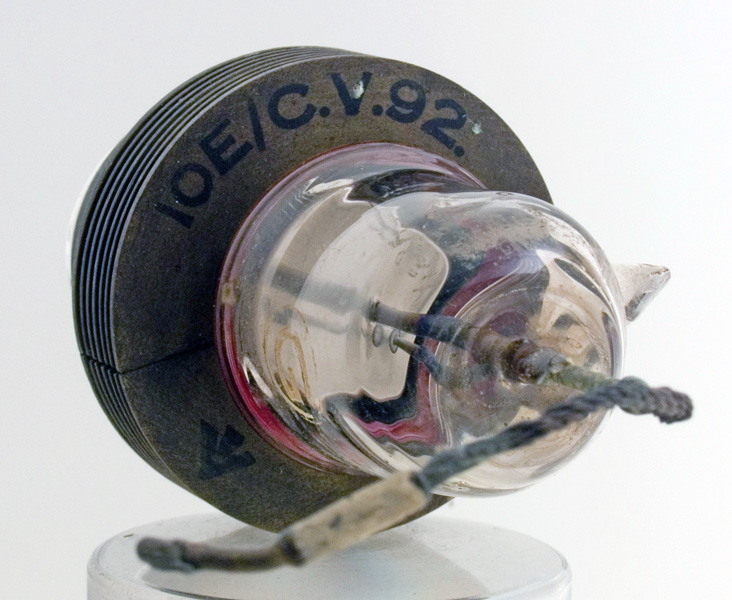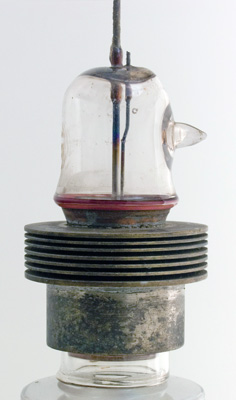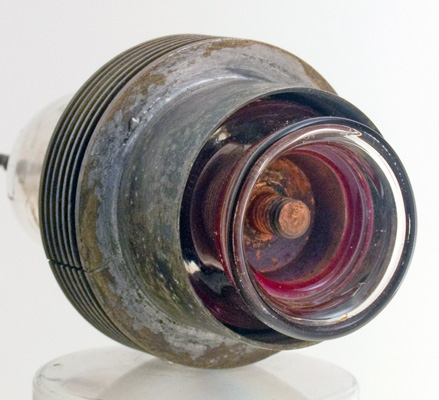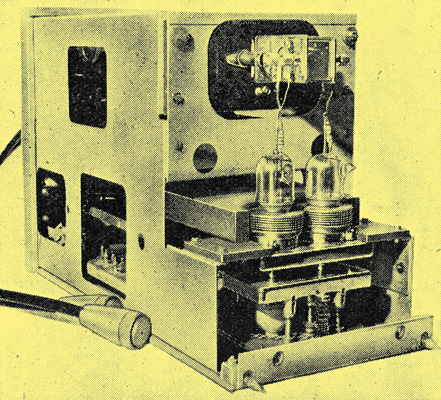|
CV92Sensibly equivalent¶ to:
|
|
|

|
The CV92 is a 'Micropup' UHF power amplifier triode. The Micropup design was developed by M-OV in 1938-9 with the experimental E931 and later E1011. These valves, operated in pulse mode, made airborne radar possible during WWII. The peak anode voltage is quoted and the maximum dissipation. For 150 Watt dissipation a forced air cooling system would be required. It is also possible to operate these co-axial triodes in Class C.The first valves of the micropup design had thoriated tungsten filaments but later designs, such as the CV92, had oxide coated indirectly heated cathodes. The following paragraph comes from The Saga of the Marconi Osram Valve.'The VT90 employed a thoriated tungsten filament but later micropups used indirectly heated oxide coatings. The use of such a cathode in high voltage work was itself revolutionary. Conventional wisdom suggested that emission from oxide cathodes was limited to about 1 amp/cm2 but it was found that in pulsed work this could be raised to perhaps 15-20 amps/cm2 because the cathode material had time to recover between pulses. Furthermore, it had been thought that oxide cathodes would quickly die in high voltage application. This was also proved false, or rather that it could be overcome by anode modulation, i.e. removing the HT between pulses. With these discoveries in place, full use could be made not only of the very high current density but very low power consumption associated with the low operating temperature around 800°C. In addition, since oxide-coated cathodes could be made in sheet or cylindrical form rather than wire, much greater effective emitting surface areas could be obtained. In fact, the use of oxide cathode materials proved to be the breakthrough which allowed such small, high frequency, high performance valves to be designed and constructed. As a result, the oxide micropups were capable of achieving pulse power performance approaching 100 times DC capability.'
This view shows the shape of the CV92. The anode is on the outside coupled to the radiating fins. The latter are soft soldered to the copper anode.
The grid connection within the re-entrant glass end.
The RAF 50 cm transmitter T3501 using two CV92s (NT99s) in push-pull. It delivers a peak power of 100 kW.The wide glass tube envelope is 49 mm in diameter, and is 85 mm tall.References: Data-sheet & 1005. |
Absolute Maximum Operating Conditions¶
| Vh | Ah | Va | Vg | mAa | μ | Pdiss | 
| 6.0 | 6.5 | 8,000 | -31 | 100 | 22 | 150W |
|
Updated November 13, 2020.
|
|